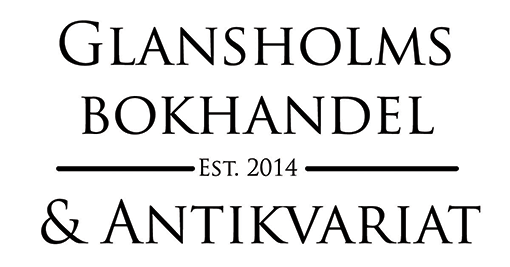
Våra experter hjälper dig eftersöka "State Procedure and Union Rights" - utan extra kostnad
Glansholms Antikvariat har många tusentals böcker på lager - och över 10 miljoner böcker hos våra underleverantörer. Vi har en unik service till dig - efterlys boken och våra experter eftersöker den åt dig och återkommer inom några dagar.
Vad kommer boken att kosta? Normalpriserna för efterlysta böcker ligger mellan 120 kr och 380 kr beroende på utgåva, skick, tillgång, etc. Vi kan inte lämna ett pris förrän vi bedömt det enskilda exet. Har vi boken inne kan det ibland bli billigare och rariteter har ofta ett högre värde, att en bok är kostsam hindrar oss inte från att eftersöka och reservera den för våra kunder.
Är en efterlysning bindande? Nej, naturligtvis får du se bild, pris och skickbedömning innan du bestämmer dig. Men en efterlysning innebär ofta att vi låter ta in boken på lager och vi är därför naturligtvis tacksamma om du är seriöst intresserad och återkommer när vi kontaktar dig via epost.
Vänligen gör en efterlysning per bok! Varje bok behöver ett eget referensnummer för att vi ska kunna hantera efterlysningen.
Vi behandlar inte efterlysningar av ordinarie kurslitteratur.
 Efterlys "State Procedure and Union Rights"
Efterlys "State Procedure and Union Rights"State Procedure and Union Rights
Av Johan Lindholm

|
Bok- presentation: |
State Procedure and Union Rights |
|
Författar- presentation: |
Johan Lindholm |

|
|
Utgåvor
That Member State courts apply the laws of the European Community is central to the enforcement of Community law. What may detract from the effective enforcement of Community law is that national courts in such situations as a general rule apply national procedural rules. While this scheme state procedure and union rights function well in most situations, national procedural law sometimes affects Community law to an unacceptable extent. In response, several exceptions from the general rule of national procedural autonomy have been established.
What can be and in this study is questioned is whether the current European order adequately balances the interests of all parties affected. By comparing the current European solution to how a similar issue has been approached in the United States it is demonstrated herein that much emphasis is placed on the effectiveness of Community law and that this is done at the expense of other, competing interests, most importantly the proper division of power between Community and Member States. The American example also provides the European Community with several suggestions how a workable and more balanced approach could be constructed.
Bok: 148052
 Anmäl textfel
Anmäl textfel





